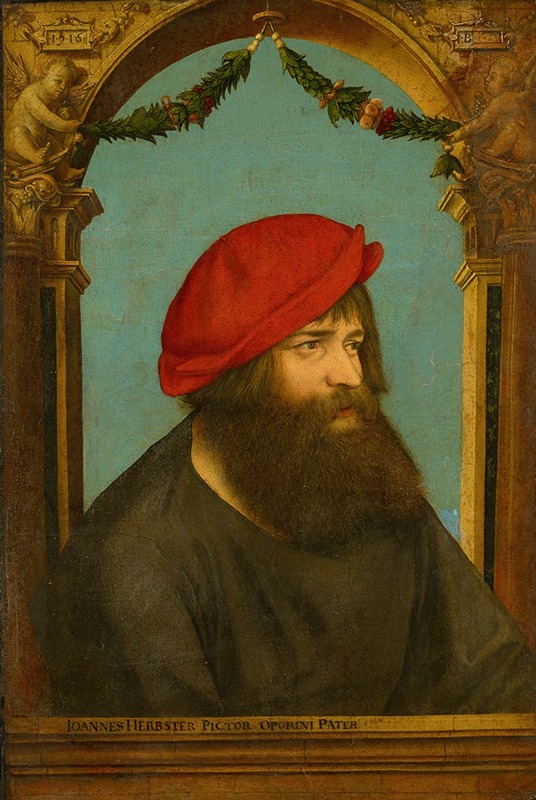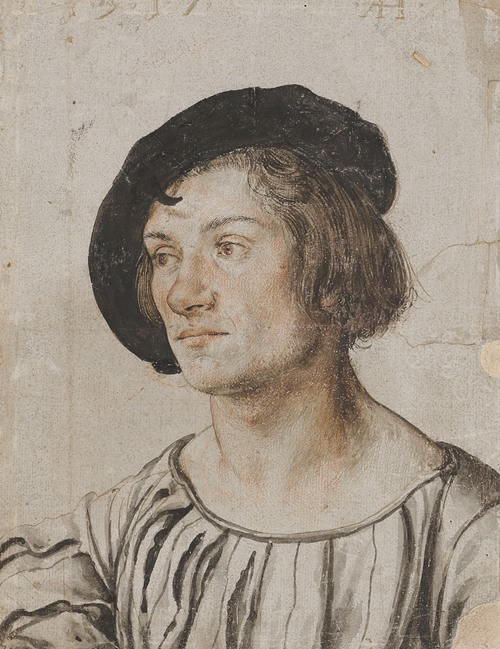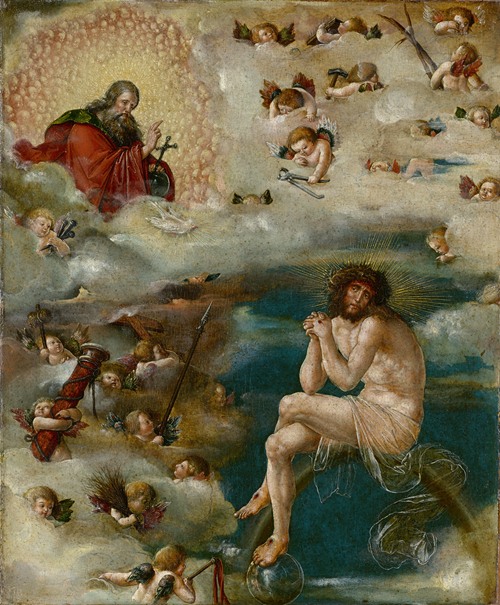
Ambrosius Holbein was a German and Swiss artist in painting, drawing and printmaking. He was the elder brother, by about three years, of Hans Holbein the Younger, but he appears to have died in his mid twenties leaving behind only a small body of work.
Like his younger brother, he was born in Augsburg (which today is in Bavaria, but then was a free imperial city), a center of art, culture and trade at that time. His father Hans Holbein the Elder was a pioneer and leader in the transformation of German art from the Gothic to the Renaissance style. In his studio both his sons, Ambrosius and Hans, received their first painting lessons as well as an introduction to the crafts of the goldsmith, jeweller and printmaker.
The young Holbein, alongside his brother and his father, is pictured in the left-hand panel of Holbein the Elder's 1504 altar-piece triptych the Basilica of St. Paul, which is displayed at the Staatsgalerie in Augsberg.
In 1515, Ambrosius is assumed to have lived in the Swiss town of Stein am Rhein, where he helped a painter from Schaffhausen named Thomas Schmid with the murals in the main hall of the St. George monastery. The next year saw Ambrosius, as well as his brother Hans, in Basel, where he initially worked as a journeyman in Hans Herbster's studio. In 1517 he registered as a member of the Basel painters' guild, on the 6 June 1518 he was naturalized as a citizen of Basel and the goldsmith Jörg Schweiger, who Holbein had portrayed before, was his guarantor. However he disappears from records soon after, and is assumed to have died around 1519.
The Portrait of a Boy with Blond Hair and its companion, the Portrait of a Boy with Brown Hair, are among Ambrosius’ best works of this period. Both are now in the Basel Kunstmuseum.
Ambrosius Holbein ranks among the most important of Basel's illustrators and prominent "small format" artists.


